White Scar Caves
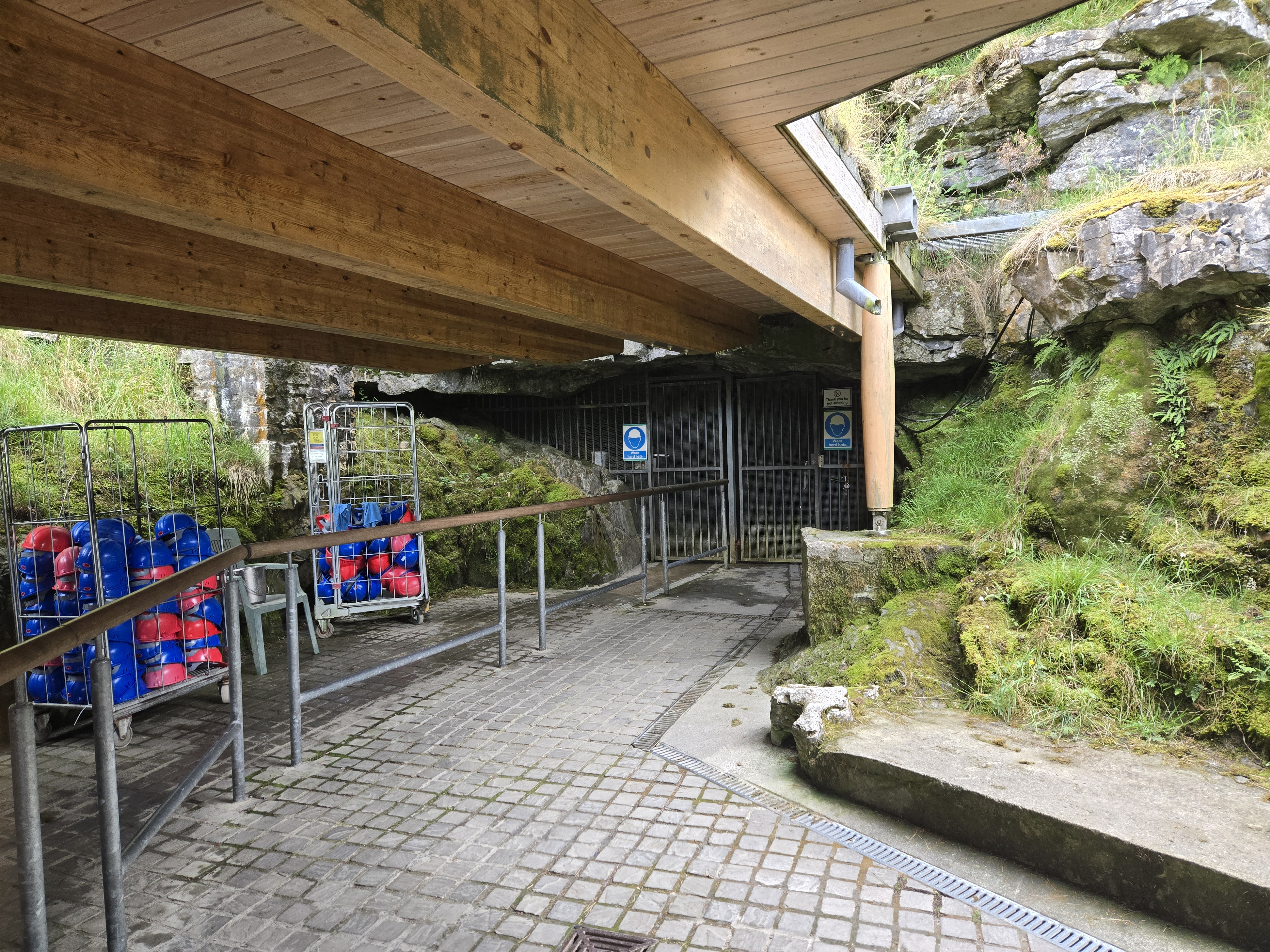
White Scar Cave is a show cave which lies directly beneath the limestone escarpment of White Scars just outside Ingleton.
Visitors to the caves walk through an artificially enlarged fissure to meet a natural stream passage - containing underground waterfalls, stalactites, stalagmites, flowstones and other natural limestone formations. Finally, a more recently excavated tunnel and walkway brings visitors to the impressive Battlefield Cavern, a huge boulder strewn chamber which was formed by glacial flood waters during the last ice age.
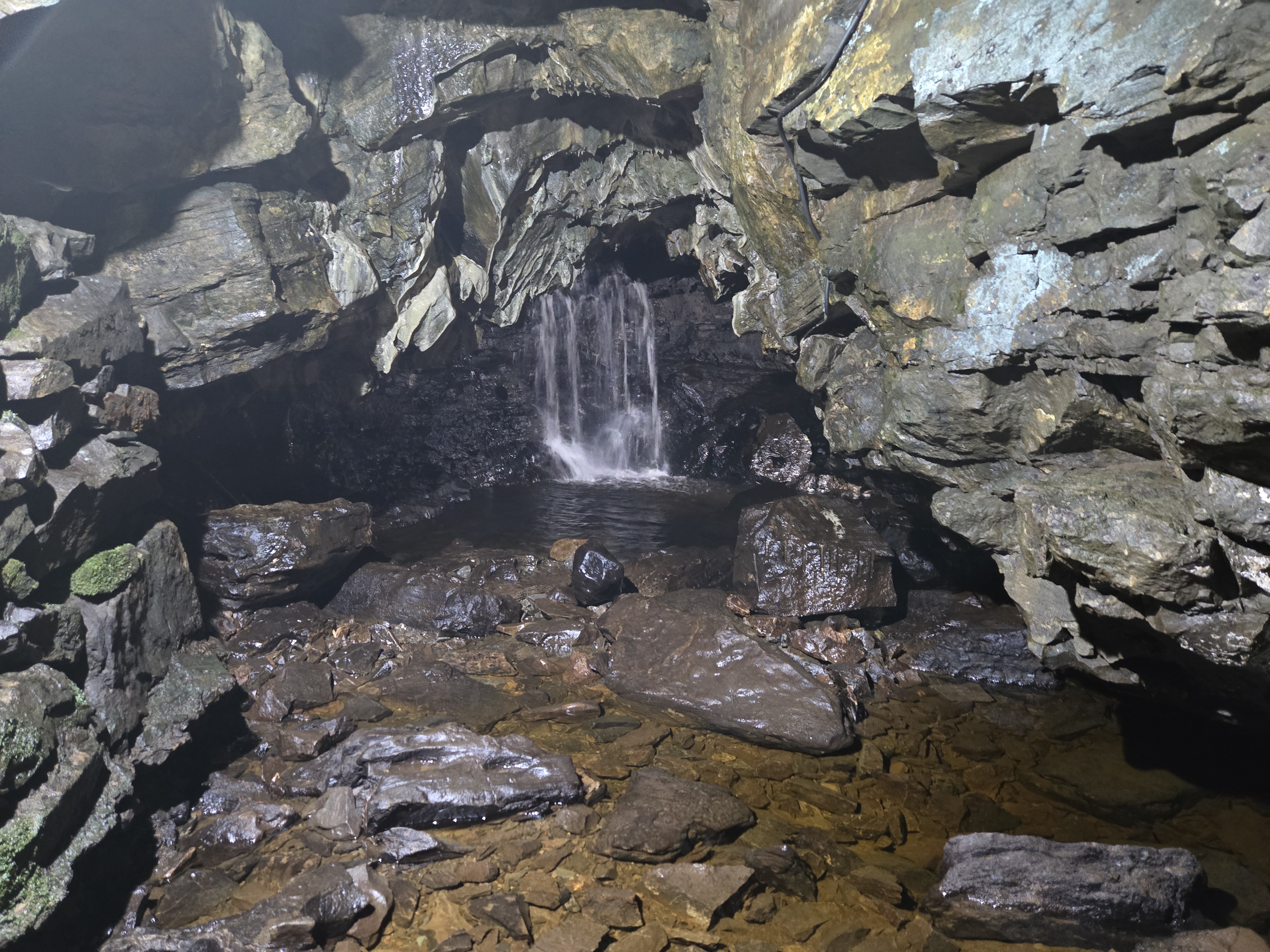
The cave was originally discovered by Christopher Long and J.H, Churchill, two Cambridge University undergraduate geologists who were visiting the Ingleton area in 1923. Long had to crawl through a long passage with only candles mounted on his hat for illumination to reach the first waterfall (pictured above), though the slate floor of the entrance was subsequently excavated with a tunnel blasted out of the rock and electric lights installed in order to allow more convenient access for fee paying visitors.
Sadly Christopher Long committed suicide only a year later at the age of just twenty two, having been suffering with depression.
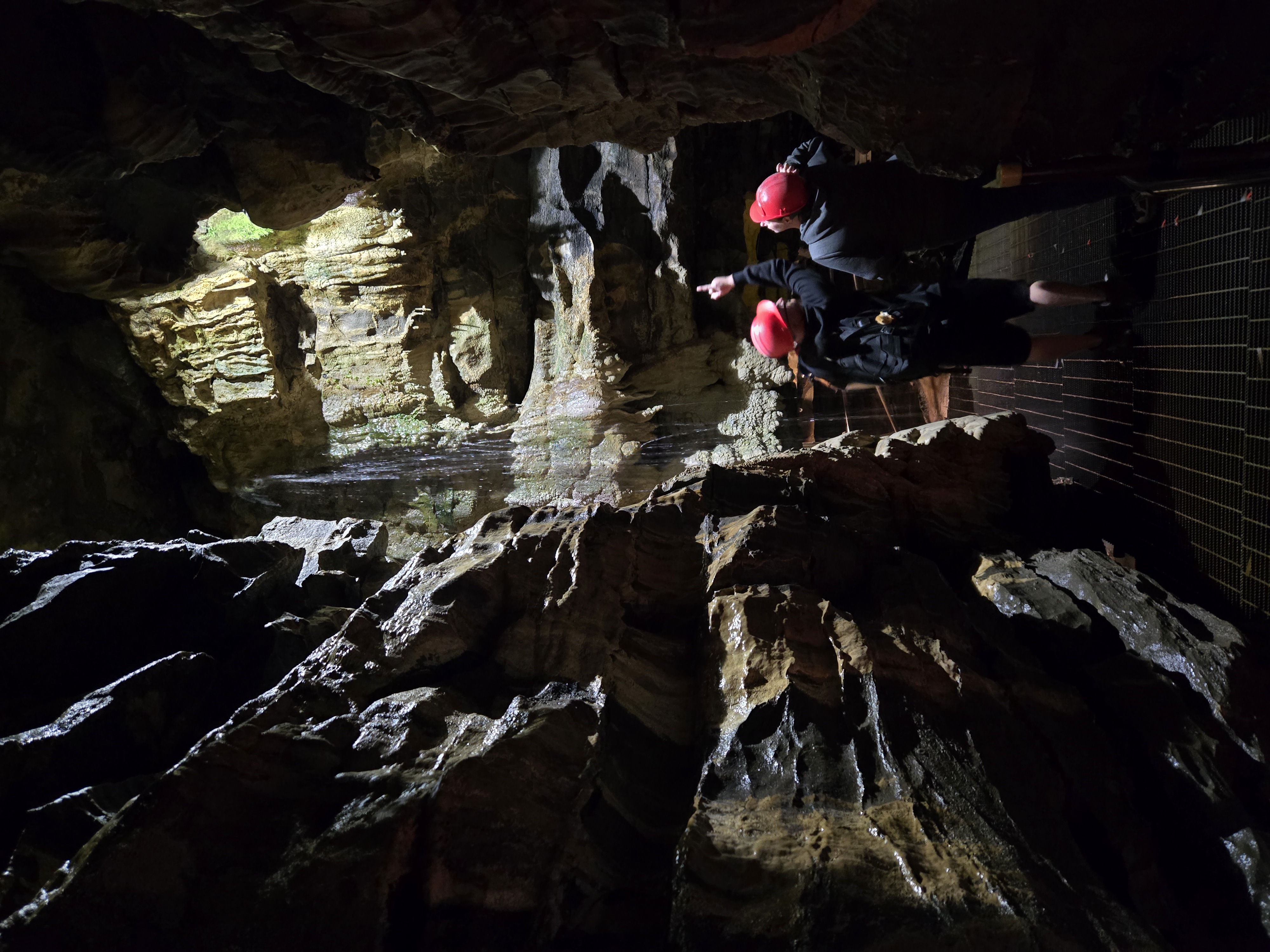
With the access tunnel completed the cave was opened to the public in 1925, and quickly became a well known tourist attraction. From the first waterfall onwards the visitors followed a specially constructed concrete path alongside an underground stream to a second waterfall (pictured above) where another stream enters from an opening in the ceiling.
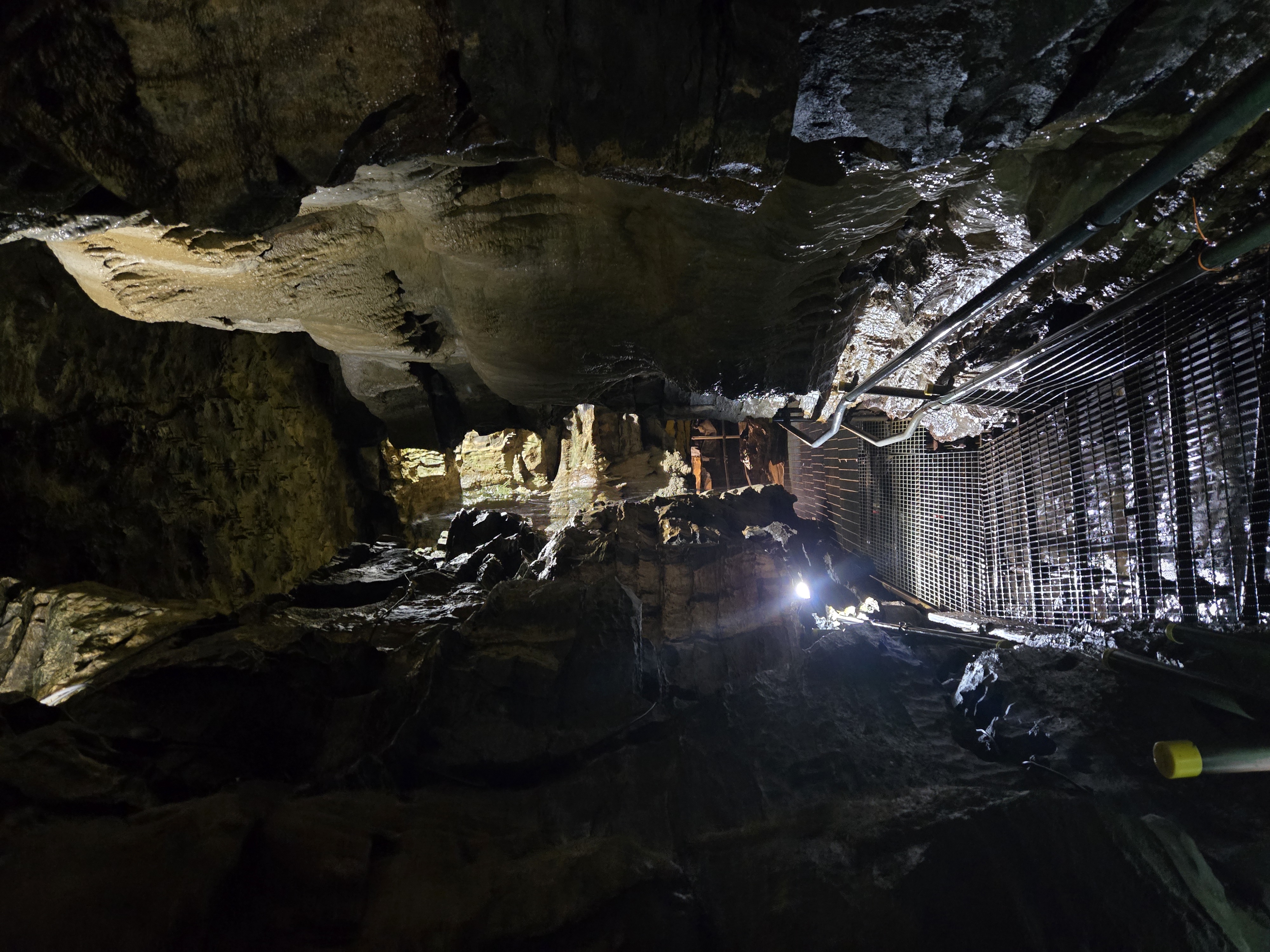
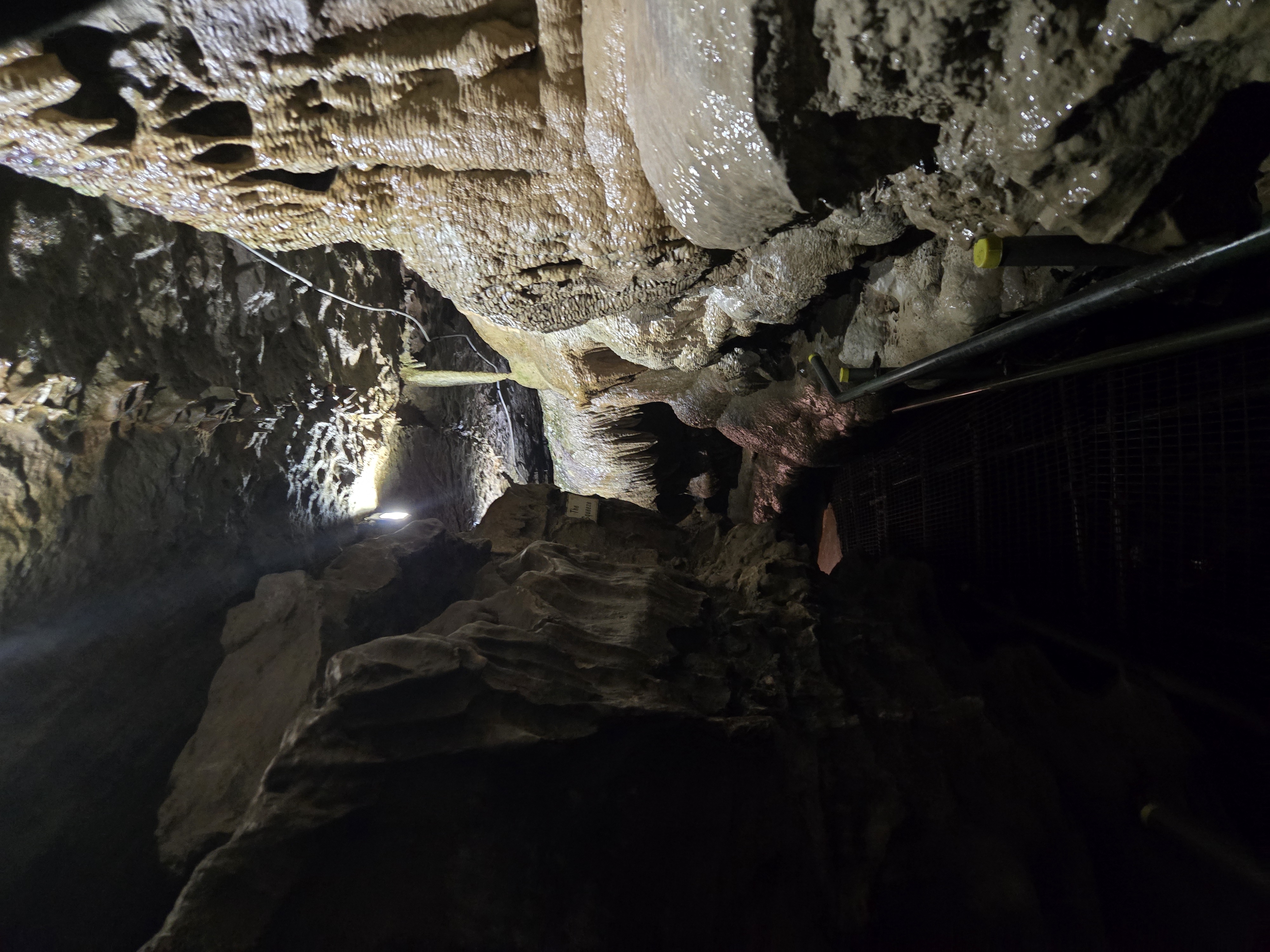
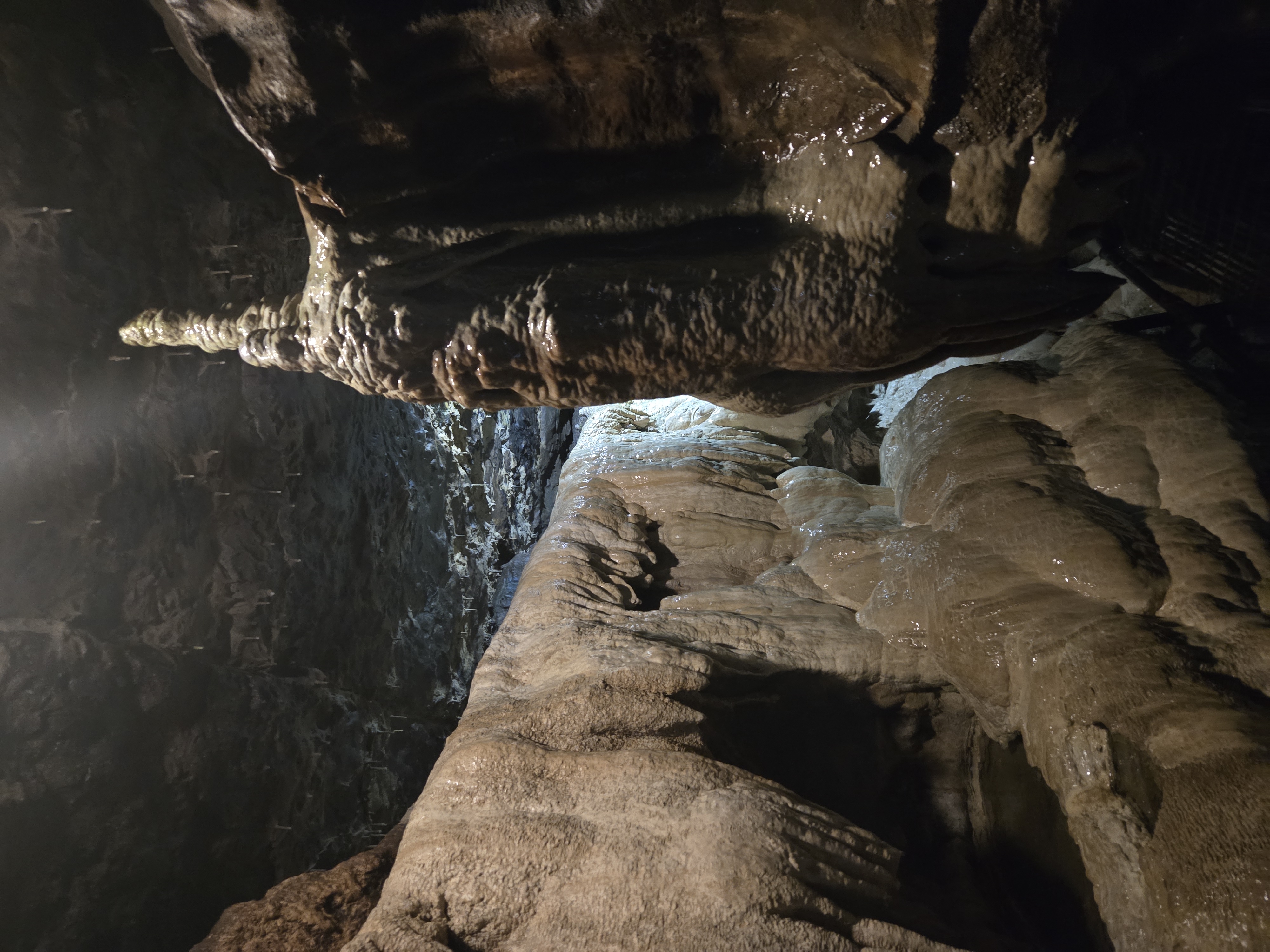
The following section of the show cave is a classic example of a vadose stream passage, a walkway above the water taking visitors between flowstone deposits with stalagmites and stalactites to be seen above.
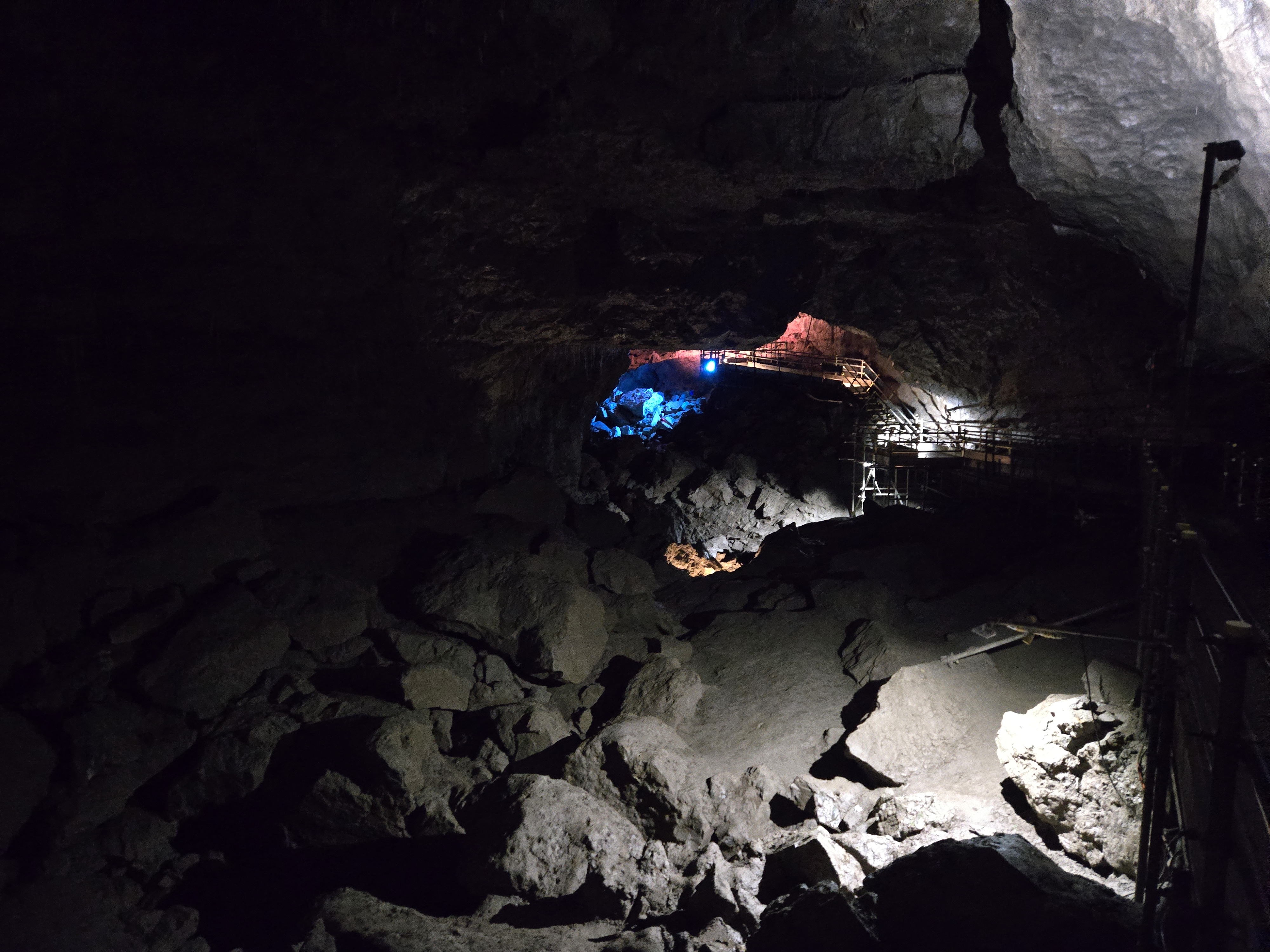
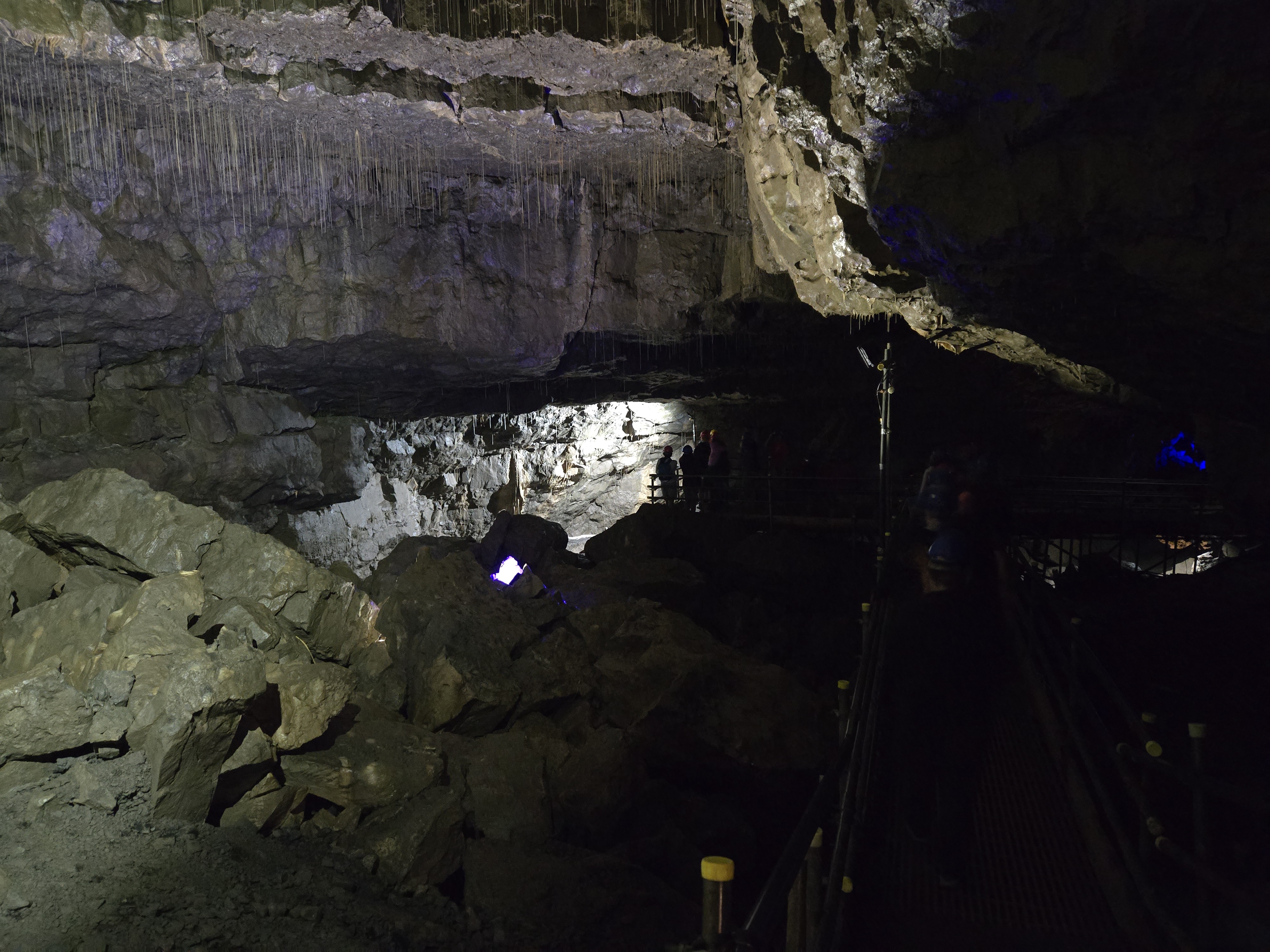
In 1990 the publicly visited part of the cave was extended when another tunnel was constructed to take visitors up a stairway to the Battlefield Cavern (pictured above), a large boulder strewn chamber adorned with straw stalactites which was formed during the ice age.
The Battlefield Cavern marks the end of the show cave as it is currently visited by the general public, but for cavers and potholers there are miles more passages and caverns to explore (with the system apparantly taking in feeder streams from Quaking Pot and Greenwood Pot near Crina Bottom and Boggarts' Roaring Holes on Newby Moss).
More information about caves, caving and potholing in the Yorkshire Dales.
The Yorkshire Dales - Home Page
The Yorkshire Dales website is designed, maintained and promoted by Eagle Intermedia Publishing Ltd.
